Learn how to make gochujang at home. In just 10 minutes, you can create your own homemade Korean chili paste from scratch. This gochujang recipe offers an easy method while preserving the deep umami flavor of traditional gochujang. Ideal for those who prefer a homemade touch over store-bought varieties.
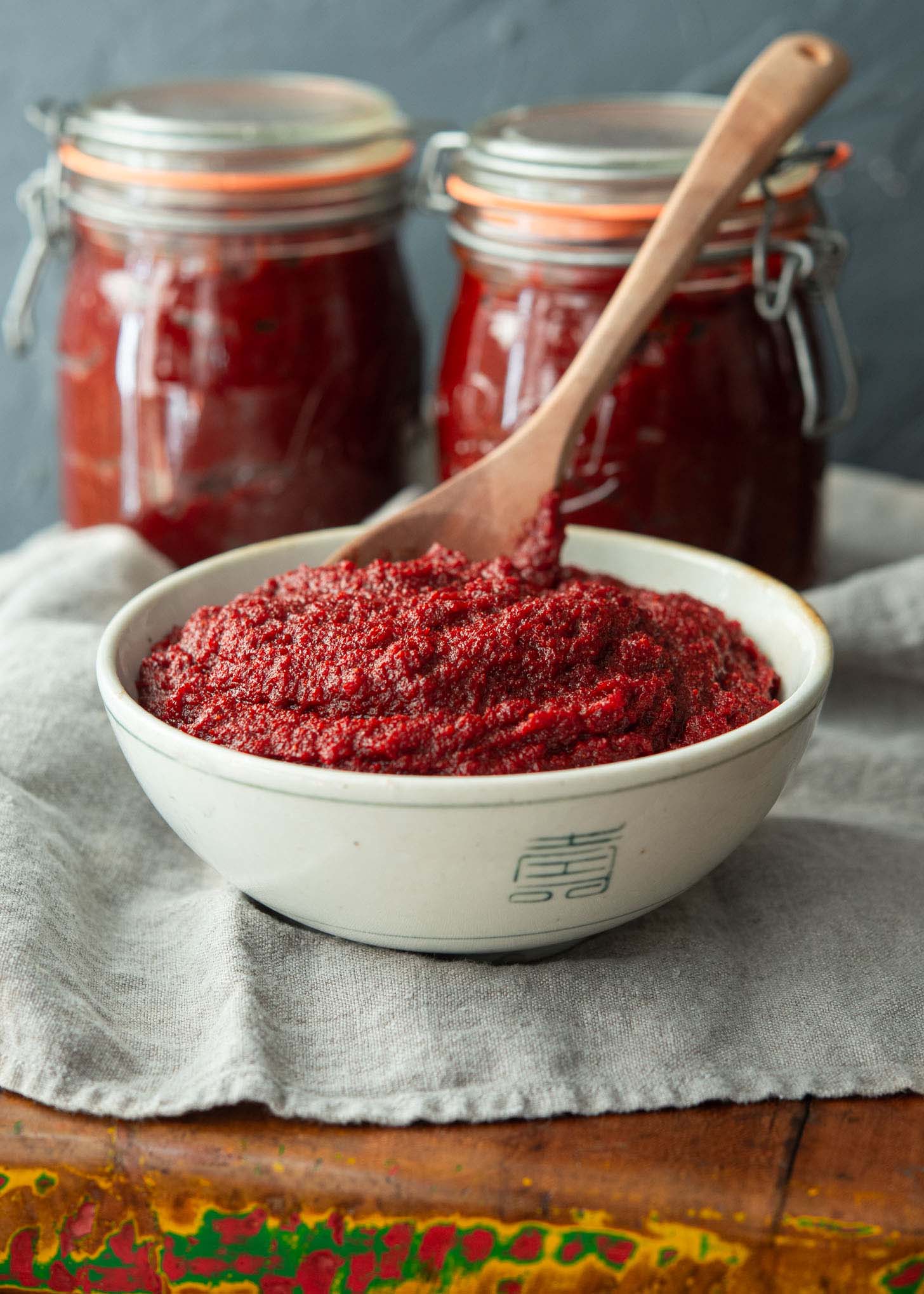

Last fall, I visited a small farming village near Seoul and took a class on making gochujang. I used to think making this authentic Korean chili paste at home was complicated and lengthy process. But I learned how to make gochujang in a surprisingly quick and effortless method.
Gochujang is a key ingredient in Korean cuisine. It adds a distinctive flavor to lots of dishes and the rich umami flavor is unmatched. Often, we resort to store-bought paste, but making it from scratch offers a more authentic experience.
I’m excited to share an easy 10-minute recipe with you. It’s so easy, anyone can make it.
This homemade Korean hot pepper paste is great to have in your kitchen. Plus, it’s a great homemade gift to share with family and friends – they’ll love it!
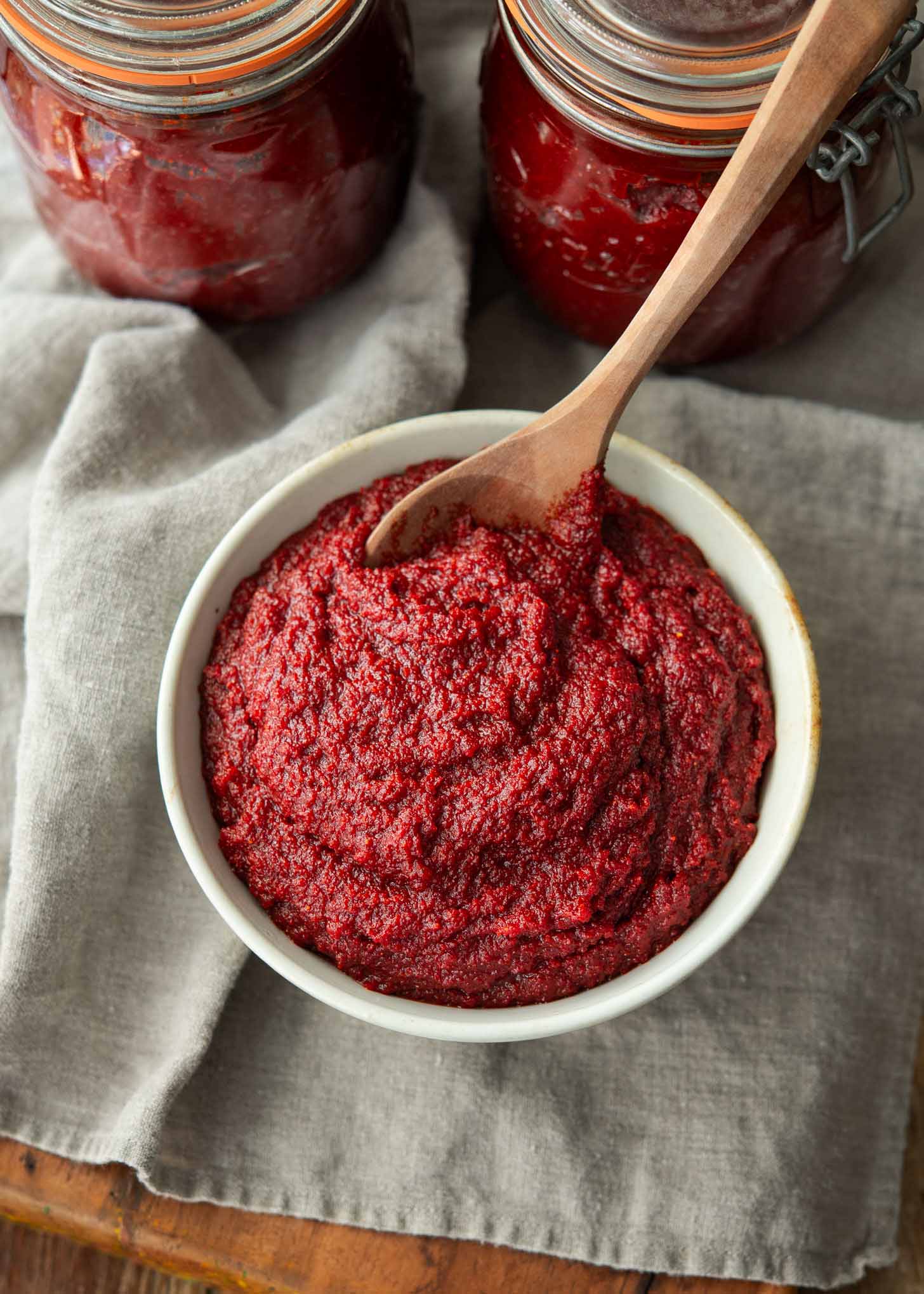

What is gochujang?
Gochujang, or Korean red chili paste, is an essential condiment in traditional Korean cooking. Its rich, complex flavor, combining spicy, sweet, and tangy notes, makes it a favorite in dishes like bibimbap, tteokbokkiand Korean fried chicken.
This deep red paste is made from a blend of chili peppers, fermented soybeans, glutinous rice, and salt. Not only is gochujang delicious and nutritious, but it also holds a significant place in Korean culture.
Beyond adding depth to soups and stews, it’s great as a marinade or sauce base, bringing a unique kick to a variety of dishes. Its health benefits, like aiding digestion due to probiotics, make it even more appealing.
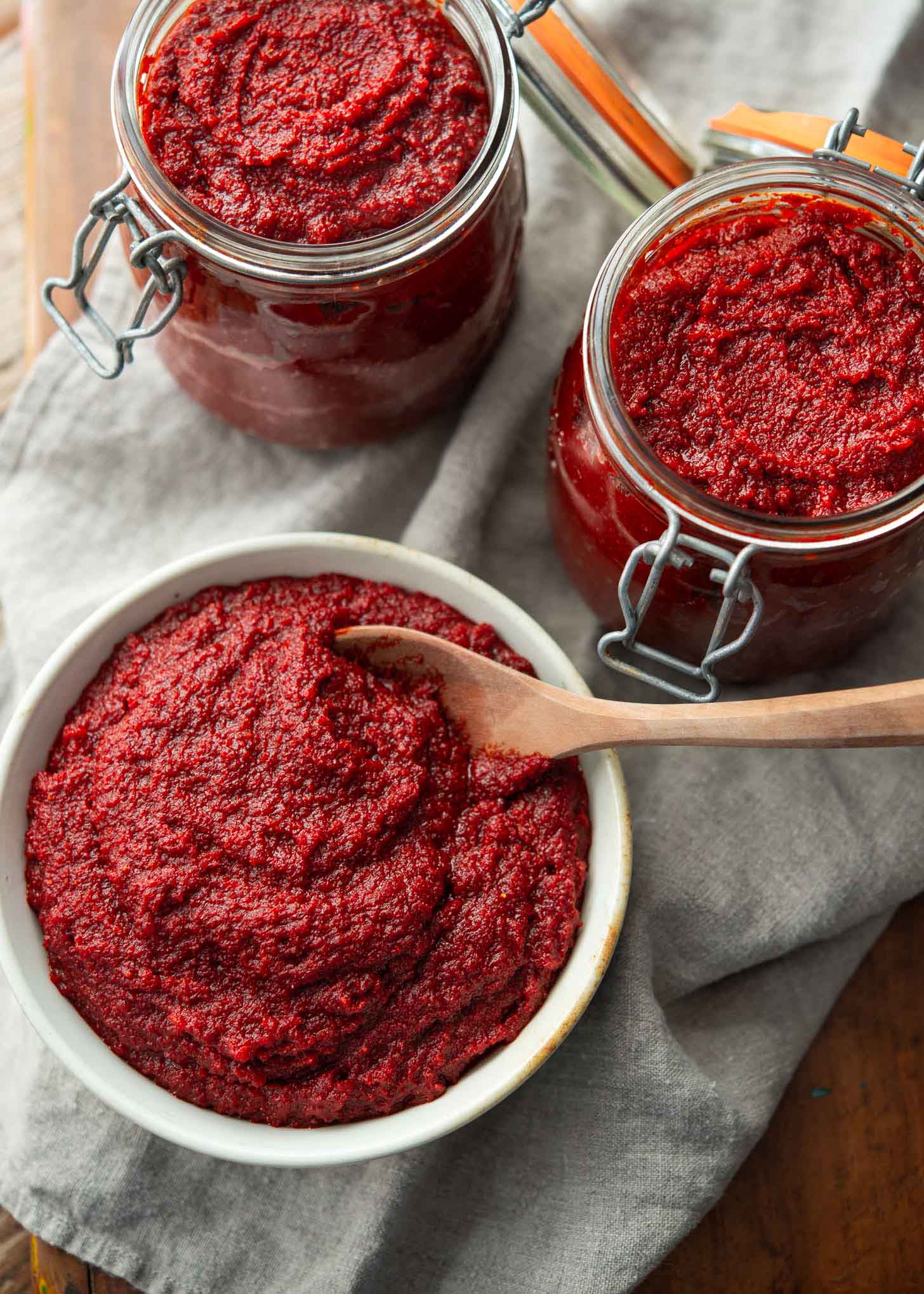

Why this recipe works?
Making gochujang using traditional methods is a time-honored process that involves several steps and requires patience, as it can take several months for the paste to fully ferment and develop its flavors.
This recipe simplifies the traditional process without compromising the authentic flavors by using fermented soybean powder (mejugaru, 메주가루) and sweet rice syrup (jocheong, 조청). It eliminates the need for extracting malt barley syrup (yeot-girum, 엿기름) and lengthy fermentation, yet still captures gochujang’s distinct blend of spicy, sweet, and umami flavors.
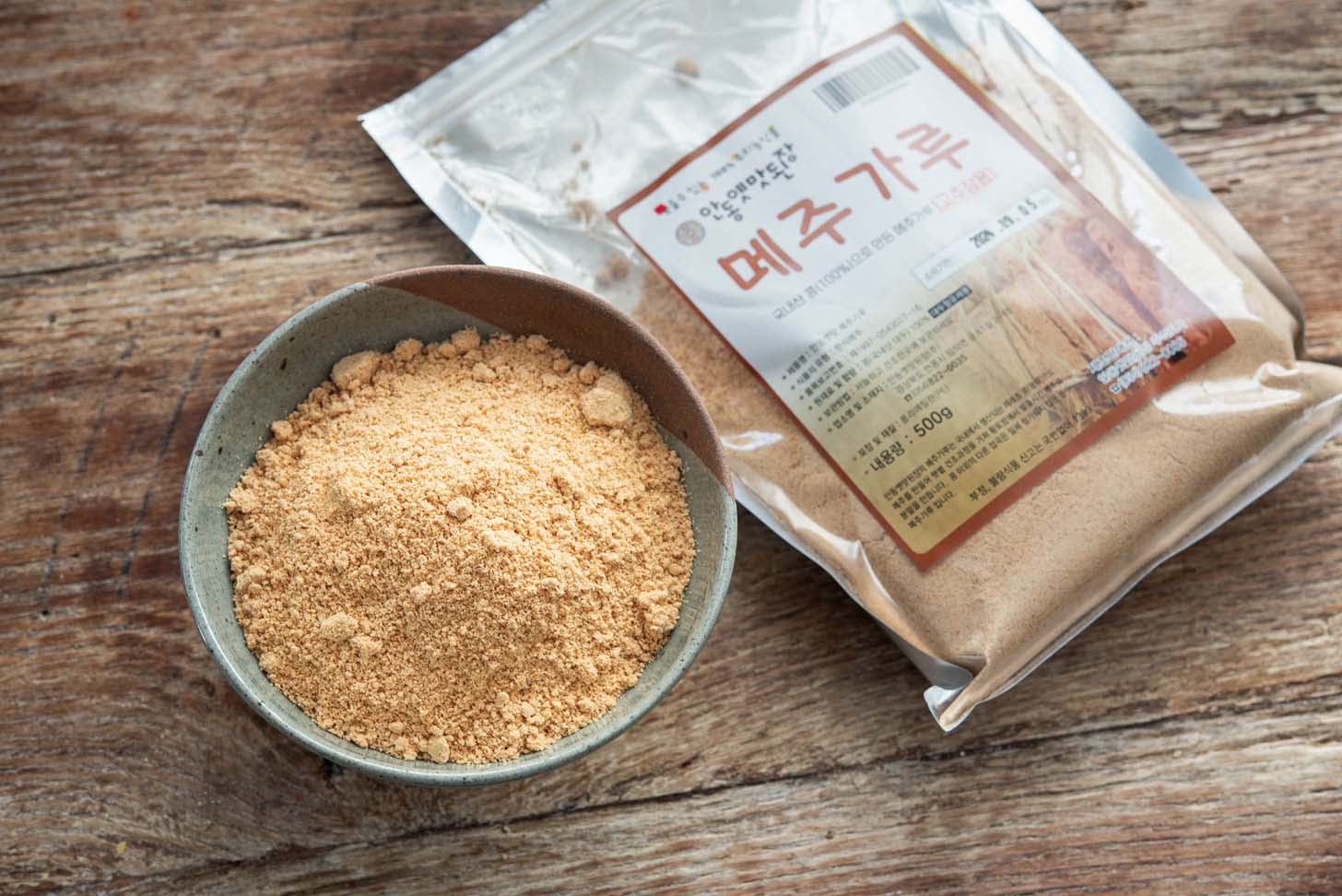

The fermented soybean powder offers the depth and earthiness typically developed through long fermentation, while the sweet rice syrup adds a smooth, subtly sweet contrast, mirroring the traditional taste. This combination ensures that even with a shorter preparation time, the essential characteristics of gochujang are preserved.
This quick and easy homemade gochujang recipe is ideal for those with limited outdoor space or time for the traditional method. It’s particularly convenient for busy cooks looking to infuse authentic Korean flavor into their dishes without the lengthy preparation time.
Plus, this recipe is a great choice for those who are avoiding gluten as it’s naturally gluten-free! There’s no need to make large batches, either. You can effortlessly adjust the recipe, dividing it in half or quarters to suit your needs.
How long does homemade gochujang last?
When stored in the refrigerator, this Korean chili paste can last for up to a year. If you prefer to keep it at room temperature, consider adding more salt and soju (Korean alcohol, 소주) to extend its shelf life.
While it’s ready to use immediately after preparation, letting the gochujang sit for a few days can enhance its flavor even further.
Choosing the Right Korean Chili Powder
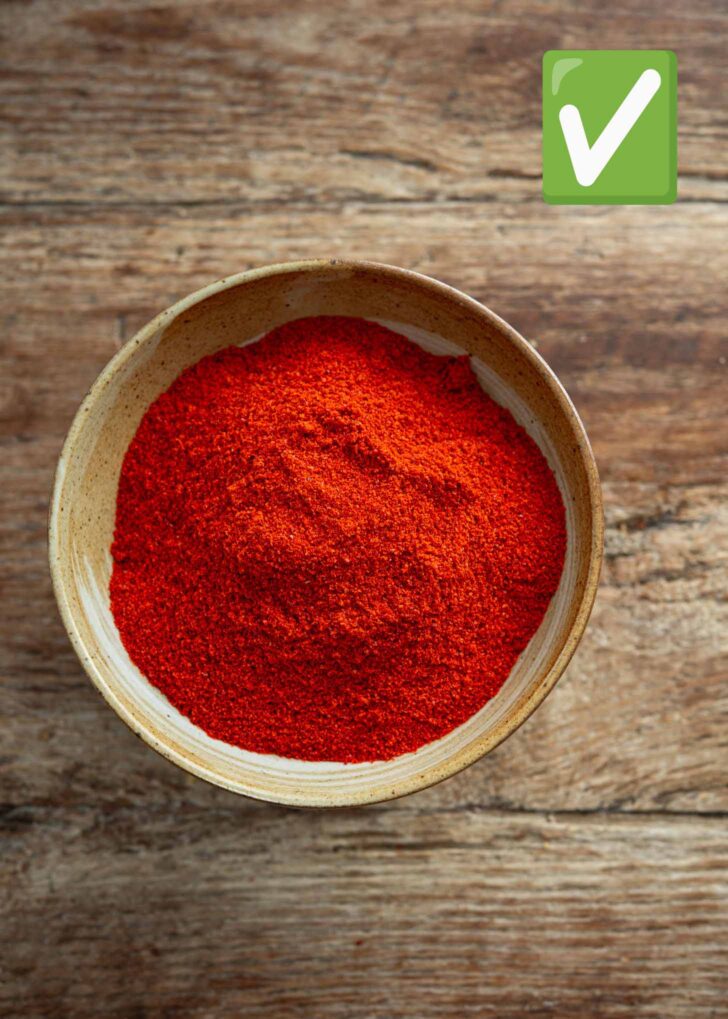

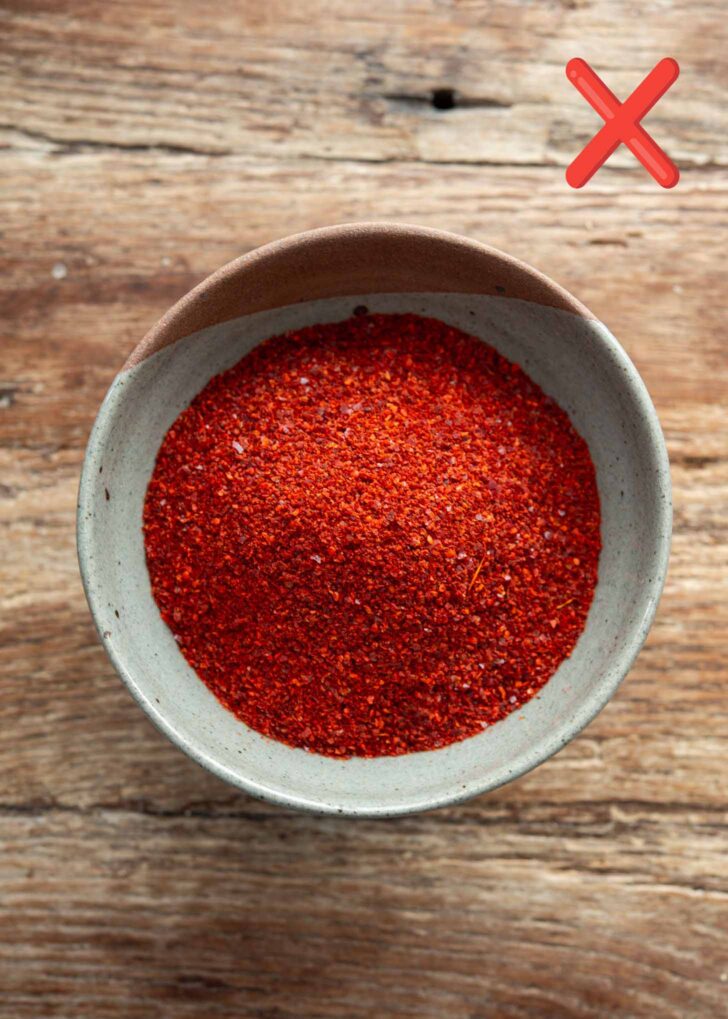

Selecting the appropriate type of Korean chili powder (gochugaru) is crucial for making gochujang paste. There are mainly two forms: flakes and powder.
In Korean cookingcoarse flakes are more commonly used, but these aren’t suitable for gochujang paste. Instead, you’ll need a finely powdered variety known as goun-gochugaru (고운 고춧가루), which is specifically used for making gochujang. You can find this fine chili powder at Korean grocery stores or online.
Recipe Ingredients and Notes
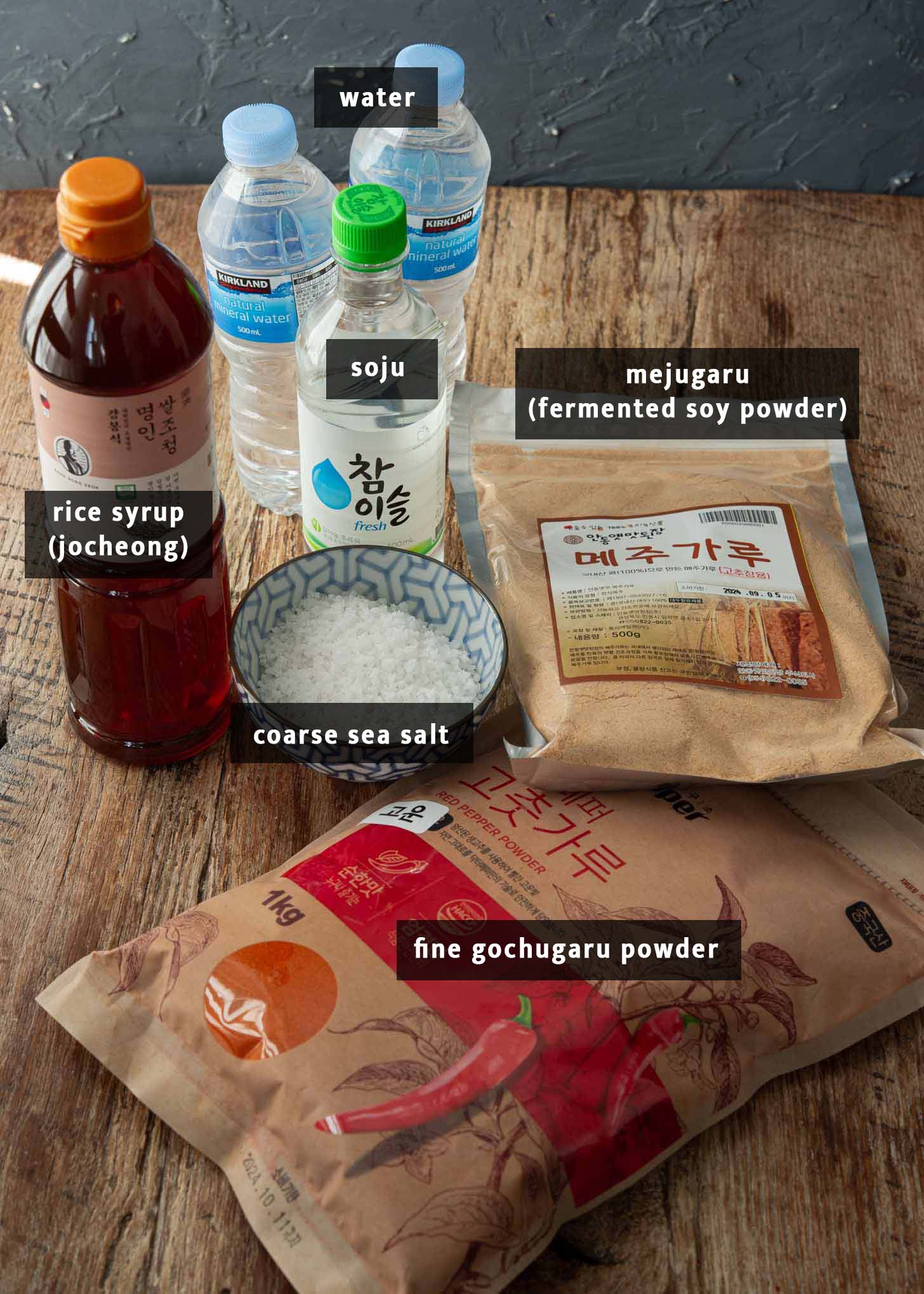

Main Ingredients
- Rice Syrup (Jocheong): A thick, sweet syrup made from sticky rice. It’s much thicker than maple syrup, resembling honey. Jocheong adds sweetness to gochujang, creating a smooth texture and a shiny look. It’s crucial for binding all the ingredients together, ensuring your condiment is perfectly balanced – not too dry, not too runny.
- Korean Coarse Sea Salt (Cheonilyum): This isn’t your average table salt. It’s a mineral-rich sea salt, specifically from Korea, and is essential for flavor. Make sure to use the type with the bitter brine removed. This salt enhances the taste and also plays a role in preservation process.
- Korean Fine Chili Powder (Goun Gochugaru): This is the key spice in gochujang, different from chili flakes. The fine powder blends smoothly into the paste, giving gochujang its iconic heat and red color. Remember, this is for gochujang only – save the flakes for other Korean dishes.
- Look for mild chili powder according to your spice level tolerance.
- Fermented Soybean Powder (Mejugaru): This finely ground powder is made from fermented soybeans and is vital for making this recipe. It introduces deep, earthy flavors and essential umami to the paste. The fermentation of the soybeans is crucial for creating gochujang’s rich and complex taste.
- Mejugaru also thickens the paste to the right consistency and enhances the fermentation of the entire mix.
Liquid Addition
- Water: Warm mineral water is best for this recipe. It helps to dissolve the rice syrup and salt, creating a consistent base for your gochujang. The mineral content in the water can also contribute to the overall flavor and fermentation.
- Korean Plum Extract (Maesil-Cheong): This extract adds a unique fruity and slightly tangy flavor to your gochujang. The natural sugars in the plum extract are perfect for fermentation, helping to develop the rich, complex flavors over time. It’s a secret ingredient that makes your chili paste stand out.
- Soju: A traditional Korean alcohol, clear and light. In gochujang, soju acts as a preservative, preventing unwanted bacteria during fermentation. Its subtle flavor helps to round out the taste of the chili paste and contributes to a smoother consistency.
- If soju is not available, sake is a good substitute. Sake has a similar profile in terms of its mild flavor and alcohol content.
Expert Tips
- Jocheong Syrup: If the jocheong syrup is too thick to pour, warm the bottle in hot water. This will loosen the syrup, making it easier to squeeze out.
- Sifting soybean powder: To ensure a smooth mix, sift the mejugaru through a sieve to break up any clumps before combining it with other ingredients.
- Adjusting Quantity: This recipe yields about 14 cups of gochujang. If that’s too much, feel free to halve or quarter the recipe based on your needs.
How to make Gochujang
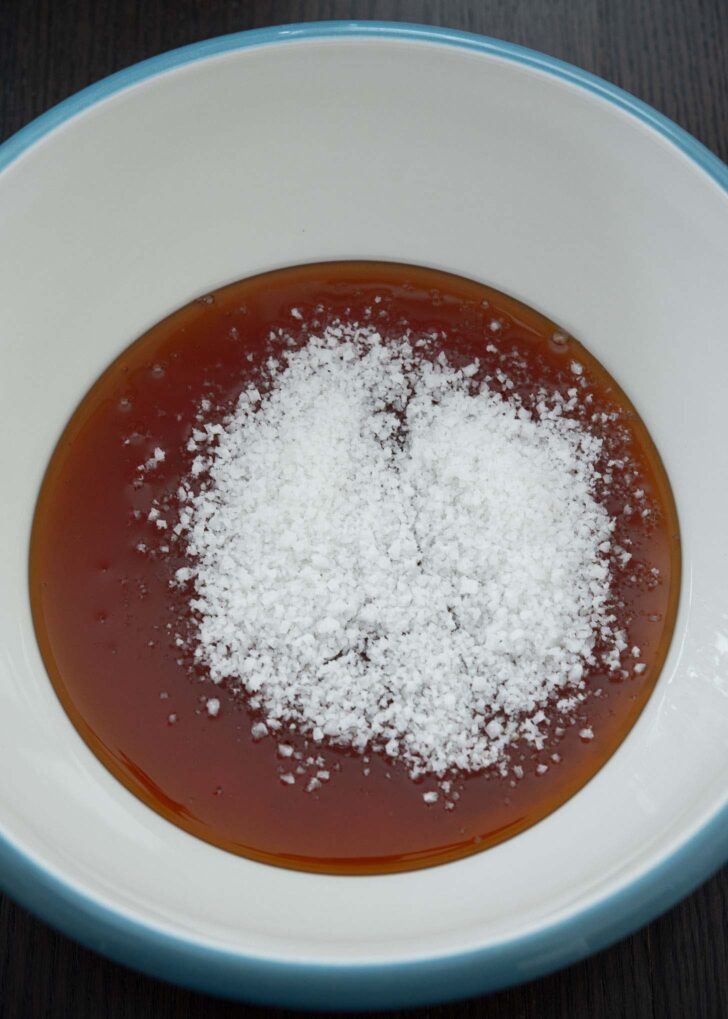

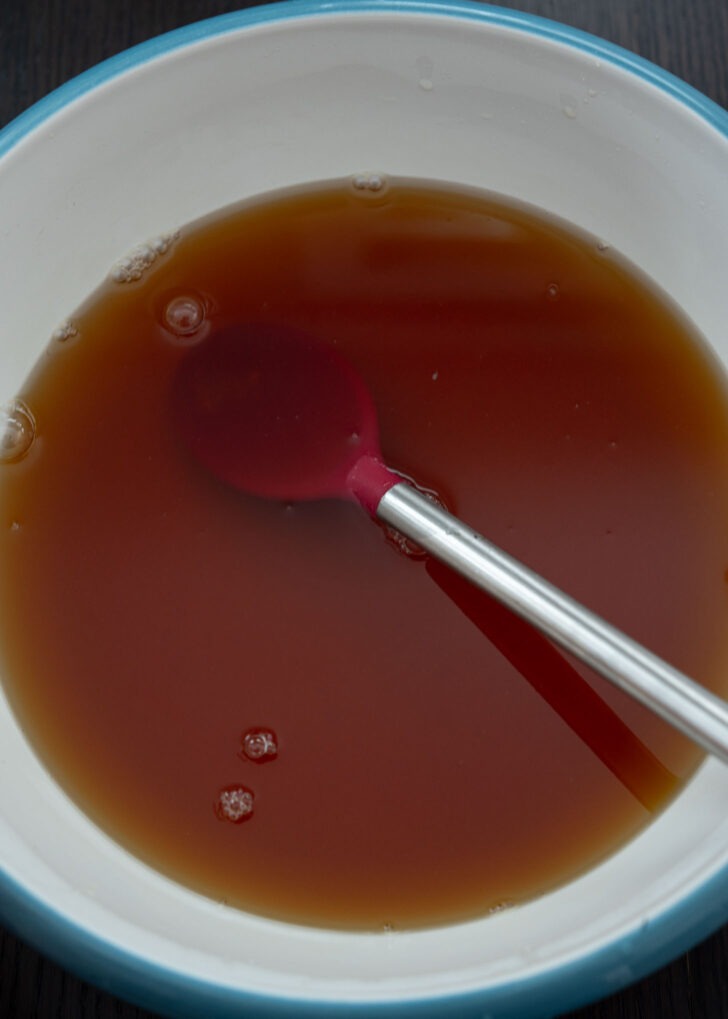

- Start by getting a large mixing bowl, big enough to hold 4 quarts (or about 4 liters). In it, combine the rice syrup and salt.
- Then, pour in warm water, stirring well to completely dissolve the salt and blend it with the syrup.
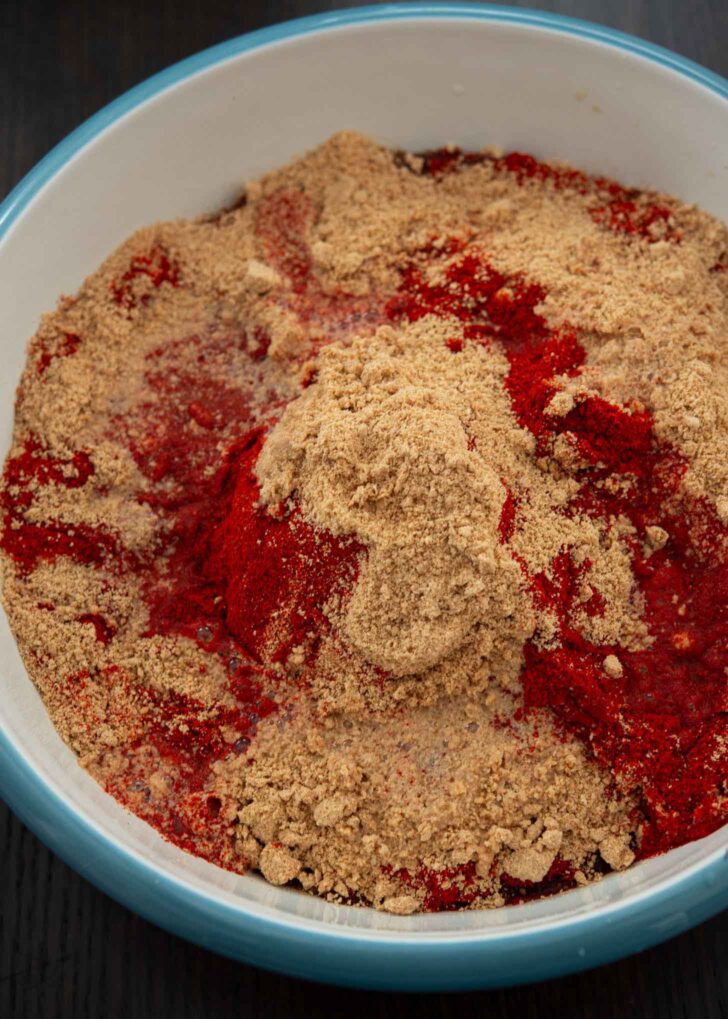

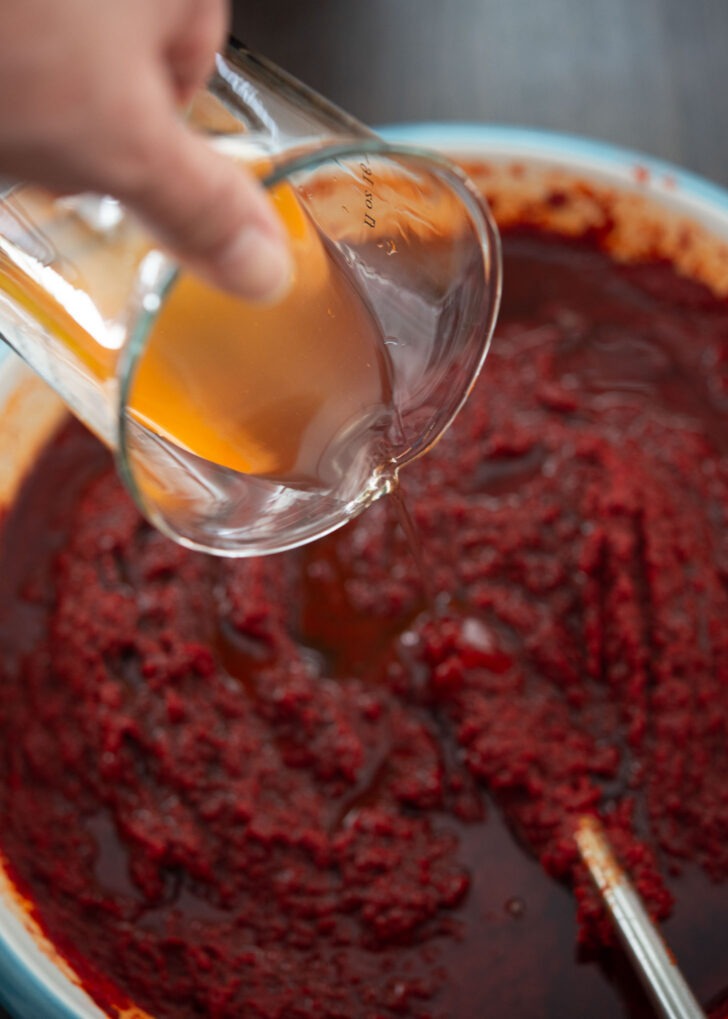

- Next, add the chili powder, fermented soybean powder (sifting it first is a good idea), soju, and plum syrup.
- Mix everything thoroughly with a spoon, ensuring there are no clumps of dry powder or crumbs left. Keep stirring until you get a smooth, even mixture.
How to store homemade Korean chili paste
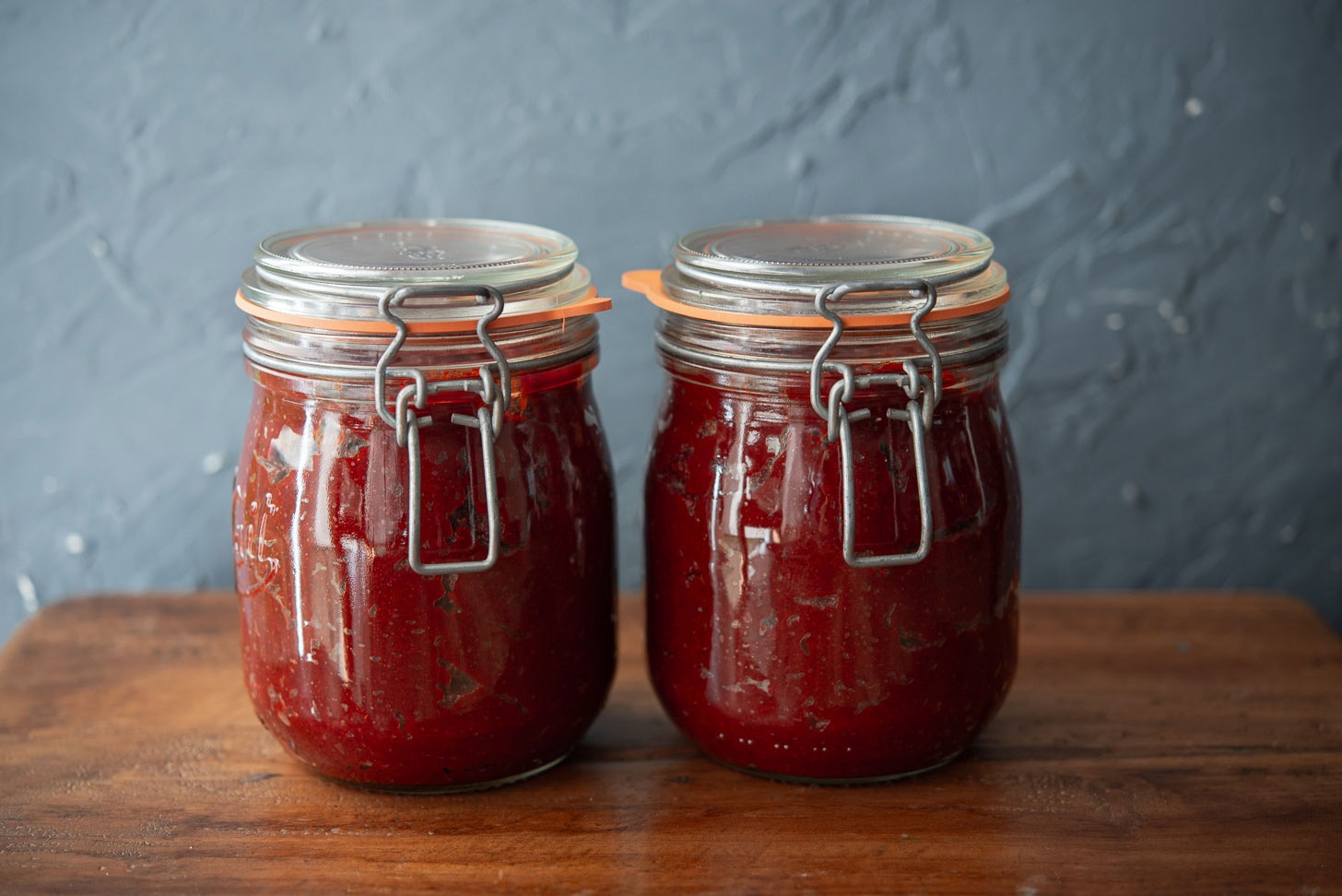

After making your gochujang, storage is simple.
- First, divide the paste into several airtight containers and seal them. Allow the containers to sit at room temperature for 3 days, then transfer them to the refrigerator. Stored this way, your chili paste can last up to a year.
- You can start using it immediately in your dishes, and you’ll notice the flavor becomes richer and deeper over time due to fermentation.
- If you prefer to store it at room temperature for a long period, increase the salt and soju by 15% to ensure better preservation and prevent mold. Make sure to store your chili paste in a dark and cool place indoors.
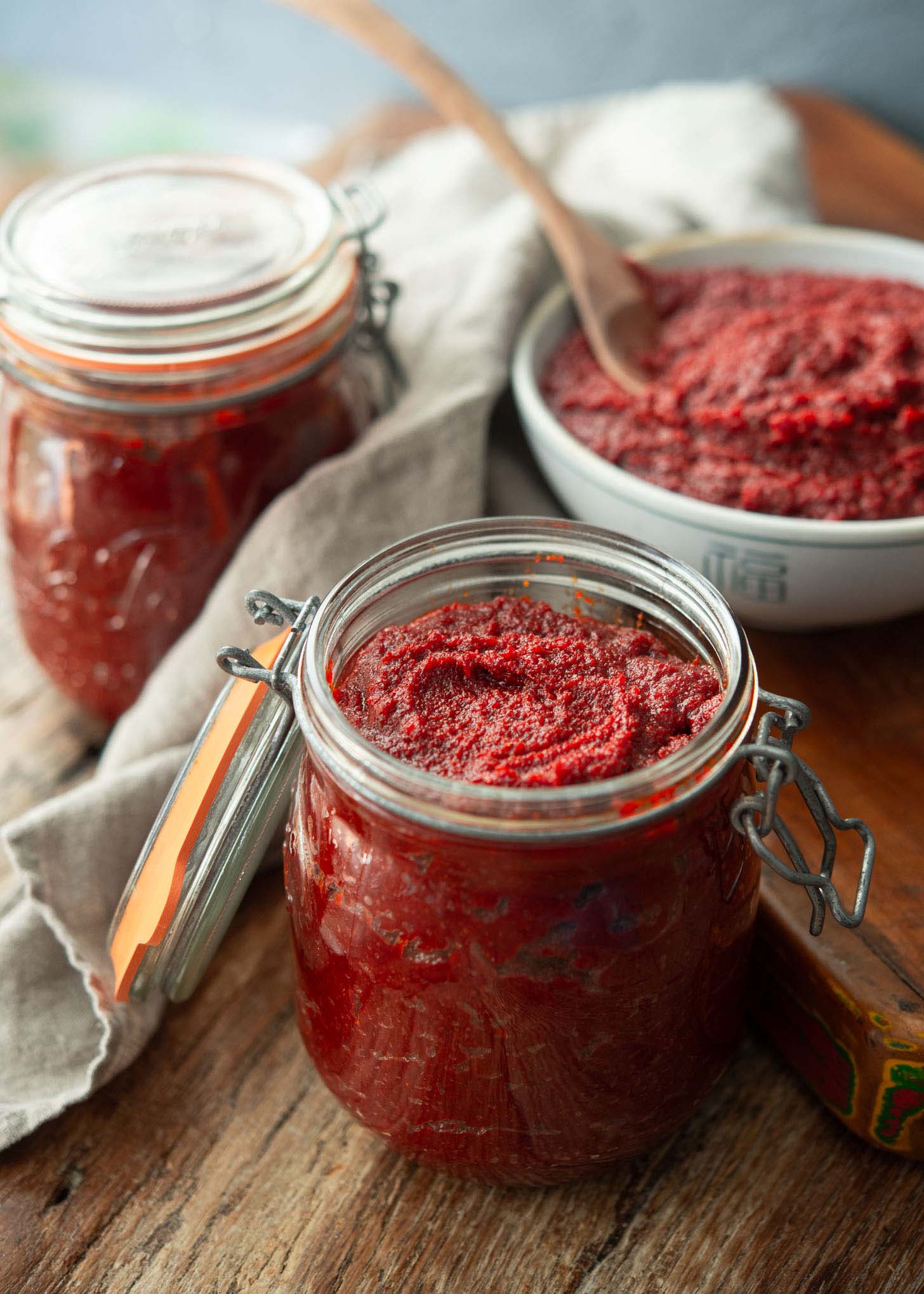

Recipes Using Gochujang Paste
Gochujang’s versatility knows no bounds, making it perfect not just for authentic Korean dishes but also for adding a unique twist to other cuisines. Here are some simple yet delicious recipes where you can incorporate this flavorful paste:
Love this recipe? Rate it and share your experience in the comments below! On Instagram? Tag me to showcase your creation. For more delicious recipes, subscribe to our newsletter!
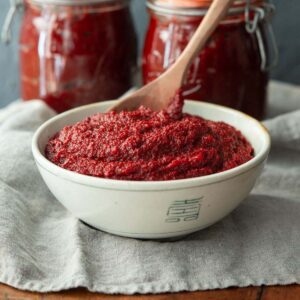

10-Minute Homemade Gochujang
Learn to make gochujang at home. You can create your own homemade Korean chili paste from scratch in just 10-minutes. This gochujang recipe offers an easy method while preserving the deep umami flavor of traditional gochujang. Yields 14 cups.
-
In the large mixing bowl (more than 4 qt capacity), combine together the rice syrup and salt. Add warm water to the bowl. Stir well until the salt dissolves and mixes evenly with the syrup.
-
Sift the fermented soybean powder into the bowl to avoid clumps. Add the chili powder, soju, and plum syrup to the mixture. Stir everything with a spoon until it’s well mixed and smooth, making sure there are no dry spots or lumps. This recipe makes about 14 cups of gochujang paste.
To store the gochujang
-
Divide the gochujang into several airtight containers and seal them tightly. Let these containers stay at room temperature for 3 days. After that, place them in the refrigerator. The gochujang can last up to 1 year when stored in the fridge.
-
You can begin using the gochujang right away in your cooking. Over time, as it ferments, you’ll find the flavor becomes more robust and developed.
-
If you’re keeping the gochujang at room temperature for an extended time, add about 10% more salt and soju for improved preservation and to avoid mold. Also, store it in a cool, dark indoor spot.
Since this gochujang recipe is quick to make, there’s no need to prepare a large batch at once. Adjust the recipe amount according to your need.

